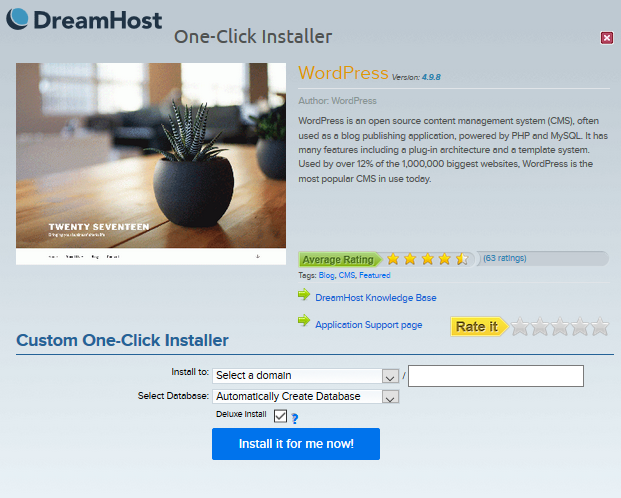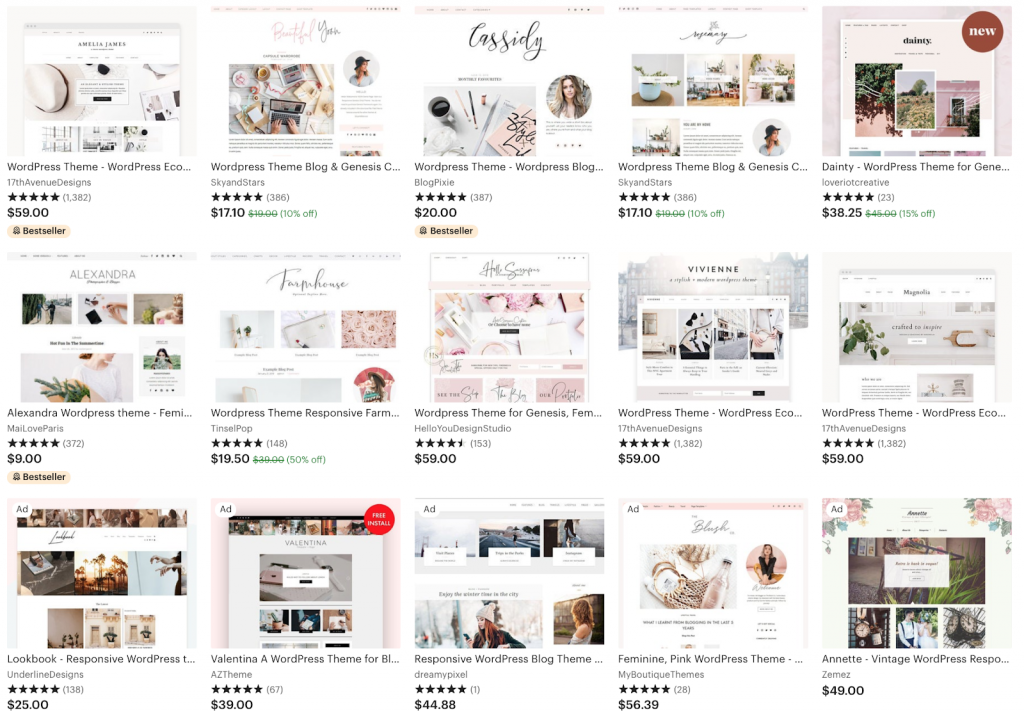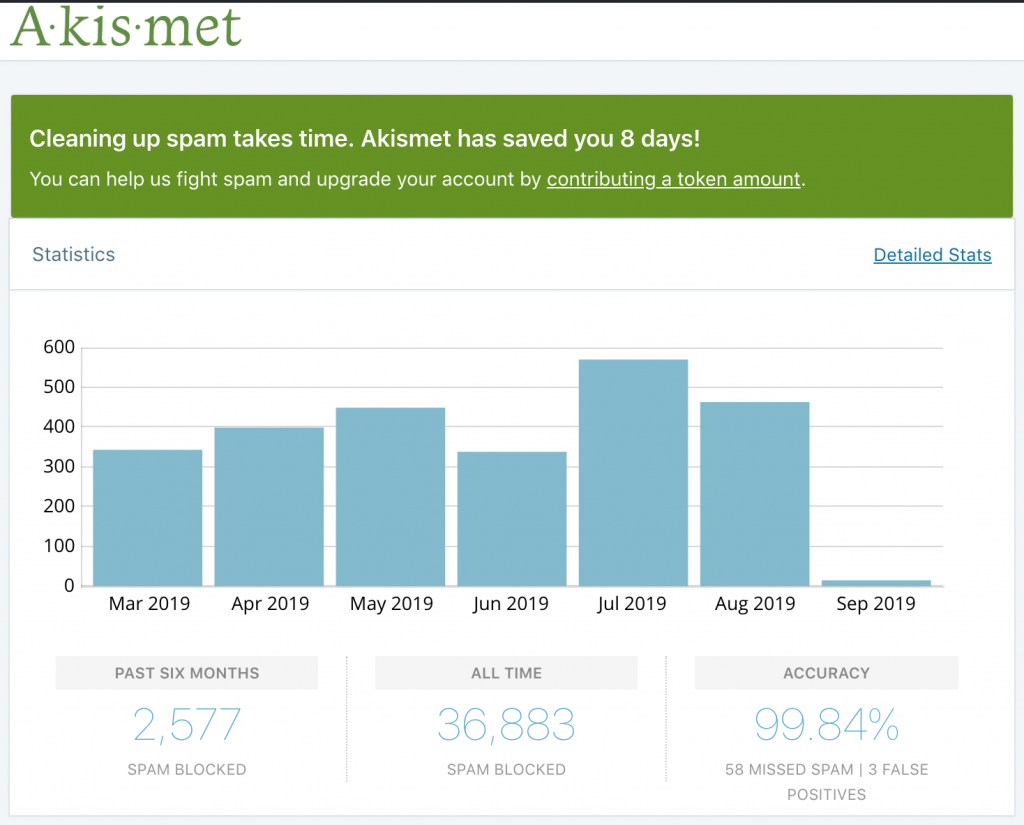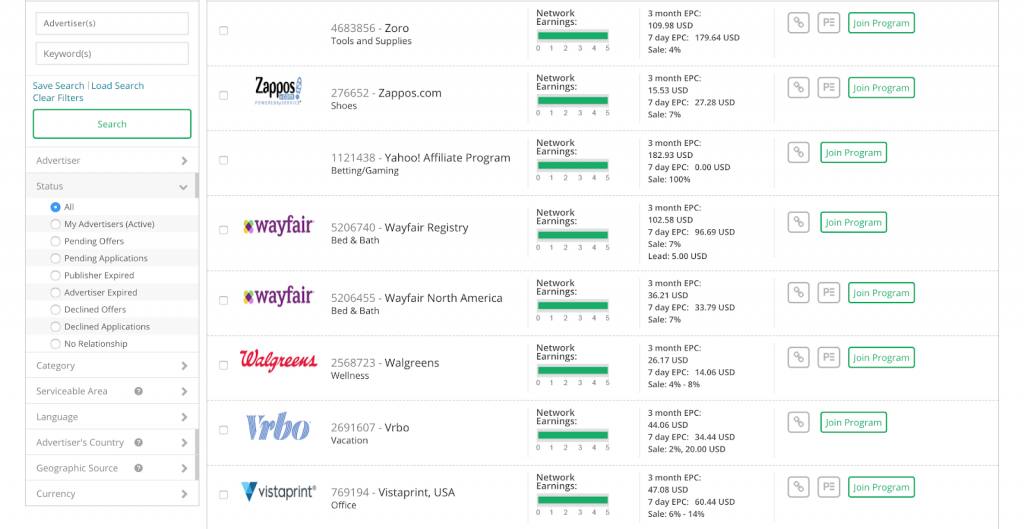To learn how to start a WordPress blog, you must first choose a web host and niche. Writers who want to share their message can have their first blog post live in less than a day using free themes or premium ones that start at 50 cents. Most hosts offer easy one-click installation of WordPress.
To have a WordPress blog, you’ll need a reliable web host. DreamHost is our pick for as low as $2.59 per month. They offer a free domain name, pre-installation of WordPress, and a free SSL certificate. Get started with DreamHost today.
The five steps on how to start a WordPress blog include:
1. Set Up Your Blog Through a Host
If you’re just starting a WordPress blog, you’ll see two different, but similar options: WordPress.com and WordPress.org. If you use WordPress.com for your blog, you don’t need a host because WordPress.com is an all-in-one solution. And because they’re hosting it for free, WordPress.com restricts how you can make money with your blog—you can use AdWords to run ads, and that’s it, unless you pay for a business plan.
When using WordPress.org, you’ll need a service like DreamHost to host your blog on its servers. Your web host will have instructions on how to start a blog, and many use a one-click install where it literally takes just one click to set up WordPress on your blog.
To set up your blog through DreamHost, follow these instructions for a one-click install:
- Create a DreamHost account
- Choose a domain name or import one you’ve already registered
- Click One-click installs and then Install it for Me Now. If you check the box for a deluxe install, this doesn’t cost anything extra but automatically gives you a template and helpful plugins to get started

DreamHost installs WordPress with just one click. Source: DreamHost
2. Choose a Niche or Category
As a blogger, you want to tell search engines that you are an authority in the subjects you write about. To do this, your blog posts should center around a single category rather than multiple categories. If you write about multiple categories, it tells search engines that you may be good at a lot of niches, but aren’t necessarily a master of them. Search engines are in the business of getting users to the right answers quickly, so you’ll usually only find those who are experts get on the front page.
It’s important to understand the difference between a category and a niche. A category is something like lifestyle, food, and money blogging. Within each category you can get very specific. For example, if you’re a lifestyle blogger you might write about niches like travel, fashion, and DIY all on the same blog. Similarly, a money blogger might write about paying down debt, saving money, and budgeting. A money blogger may even write about the journey their small business website made to making its first million dollars.
To find a niche market, focus on not only something you’re an expert in, but something you actually enjoy writing about. Your blog will feel less like work when you can spend days researching and writing on your favorite subjects.
Understand that it’s OK to shift your focus from one niche to the next later on, but it’s best to stick with the same or related category. The reason for this is because you’ve spent a lot of time telling Google what your blog is about, and if you start telling it you’re something else it’s possible you won’t get as much search engine traffic.
Once you’ve chosen your blog’s niche or categories, be as specific as possible in naming them. The reason for this is because “Intergalactic Cupcakes” might sound like galaxy cupcakes instead of what you intended, which are cupcakes so good they taste like they are from another planet. For your blog category, you can choose “Cupcakes” instead. If your site is very niche and the entire blog is about cupcakes, you can specify by cupcake type like vegan cupcakes, gluten-free cupcakes, lemon cupcakes, and red velvet cupcakes.

The Dating Divas write about everything marriage and strengthening family bonds. They also have everything from a membership site and sell “date in a box” type printables.
3. Pick a WordPress Theme
A WordPress theme is a template that alters how your blog looks and functions. There are many free themes to choose from, or you can pay for a premium theme. Paid themes are found on websites like Theme Forest or Etsy. If you see a theme that you really like from another blog, a handy tool to determine which WordPress theme they’re using is What WordPress Theme Is That. This free tool can also tell you which plugins the website uses.
Theme Forest
Themes found at Theme Forest are part of Envato Elements and start at just $13, and go up to $99 per theme. There are themes for all kinds of niches, and even have ones for ecommerce blogs too. If you create a free account, every month you can download free files like themes, audio, and videos. You’ll get instructions on how to install your theme into WordPress no matter where your blog is hosted.

An example of a $59 travel blog theme on Theme Forest
Etsy
A marketplace for creatives, Etsy themes and templates tend to focus heavily on design aesthetics. Pricing starts at 50 cents and goes up to over $5,000 if you’re requesting a completely customized theme. Each theme comes with instructions on how to install it in WordPress, no matter who your blog’s host is.

Etsy has many elegant themes to choose from
4. Install WordPress Plugins for More Features
A WordPress plugin gives your blog additional functionality without having to do any coding like CSS or HTML. There are tens of thousands of different plugins available, each designed to do things such as reduce comment spam, improve search engine optimization (SEO), and provide analytics.
Popular WordPress plugins include:
- Akismet: Spam is no fun for anyone, so the Akismet plugin helps detect known spammers and keywords used by them. This sends any spammy blog comments straight to the spam folder.
- Jetpack: The Jetpack plugin acts like a gatekeeper, preventing malicious login attempts. It also monitors for downtime, and notifies you if your site isn’t working so you can work with your blog’s host.
- Google Analytics by Yoast: If you ever decide to make money with your blog, you’ll need to know how much traffic you get and your demographics. This plugin makes it easy to determine that information.
- Yoast SEO: This plugin points out changes to make on your blog posts to best optimize them for search engines. This translates to more quality traffic.

The Akismet plugin helps prevent spam comments. Source: IdyllicPursuit.com
5. Create Your First Blog Post
You can write your first blog post on just about anything. Some people use their first post as an opportunity to introduce themselves and what people can expect by coming to your blog. Others prefer to pick the one article that made them decide to start a blog in the first place. You may even have an entire notebook full of ideas.
If you’re stuck on what to write your blog post on, here are a list of ideas:
- Answer the No. 1 question people ask you about your topic
- Tutorials on how to do something within your niche
- Share a behind-the-scenes look into your life
- Create a list of tips from expert contributors
- Share which apps within your niche makes life easier
- Tell people what inspired you to share your expertise with others
- Give a list of common mistakes people make when trying to do XYZ
No matter what your title is for your first blog post, it’s important to not spend too much time analyzing the post and tweaking it to perfection. Your post should be polished, but it doesn’t have to be an enormous manifesto detailing every single possible thing someone needs to know on the subject. Those can come later in other blog posts.
Most blog posts are at least 300 words, but search engines seem to prefer posts that are at least 2,000 words. After you’ve written your post, you will need to promote it to get people to read it.

An example of the visual WordPress editor
How to Grow Your WordPress Blog’s Traffic
Sharing your message with the world requires people to visit your content. There are many different ways to get traffic to your WordPress blog. These traffic sources include guest blogging, SEO, social media, and your own email list. Your traffic strategy should involve a combination of each of these methods.
Guest Blogging
Guest blogging is the act of writing a blog post for another similar blog. This is done with the intention that you’ll get a backlink, which is a link to your blog and helps SEO if it’s a quality blog that you’re a guest on. People also guest blog with the expectation that readers will then come over to their own blog and read the content. To get started, contact bloggers with similar content that you admire.
SEO
The goal of SEO is to have your blog posts show up at the top of the first page of a search engine. The search engine pages are known as SERPs, or search engine results page. Your SEO strategy should involve having a fast blog, easy navigation, and have high quality blog posts that answers a question thoroughly. Your blog should format correctly when viewed on a mobile phone. Additionally, you need descriptive meta-tags, which tells search engines what your post is about.
Social Media
Sharing your blog posts on social media is a great way to show your content to your friends, family, and fans. Popular social media platforms include Facebook, Twitter, and Pinterest. If you’re sharing your blog posts on Instagram, you’ll need to include a link to your blog within your bio since you cannot have a clickable link within the captions of your Instagram post.
Your Own Email List
Social media platforms come and go, so it’s important to build an email list of followers from the very beginning. Followers are more likely to provide their email address if you give them an incentive to do so. These incentives include checklists, e-books, cheat sheets, and exclusive videos. Once you have their email address, you’ll need to continue to nurture that relationship by periodically sending valuable newsletters. You can house the email addresses in an email provider like Convertkit.
How to Start a WordPress Blog for Profit
If you’re using WordPress.com to host your blog, you’re limited to using the ad network AdWords. However, you can easily monetize your WordPress blog through a variety of options if you’re self-hosted. These options include ads, affiliate programs, sponsored content, and membership sites.
Many bloggers use a combination of several of these methods to make money blogging:
- Ads: Ads generate revenue in different ways—some pay after a user clicks on the ad, while most pay if a sale results from the click. Others use ad networks like Mediavine, although to get accepted to them you’ll need at least 30,000 page views per month.
- Affiliate programs: An affiliate program provides a commission to bloggers after an action takes place—usually this is a click, lead, or sale. Bloggers may use an affiliate program like ClickBank, CJ.com, or Travelpayouts.
- Sponsored content: Bloggers can pitch brands directly if they’re interested in working with them, although a lot of bloggers use influencer networks. These networks include The Women Bloggers, Activate, and Find Your Influence.
- Membership sites: A membership site typically provides exclusive monthly content to subscribers. Many bloggers charge between $10 per month and $97 per month for membership sites.
- Live events: These include live events like retreats, workshops, and conferences. Sometimes, paid live events occur online instead of in-person. Online events tend to have much lower overhead than an in-person one.

An example of many of the brands offered under affiliate program CJ.com
Starting a WordPress Blog Frequently Asked Questions (FAQs)
This section includes the most frequently asked questions about how to start a WordPress blog. If you don’t see your question, head over to our Fit Small Business forum and post your question there. We have a whole team of industry experts who answer questions from small businesses every day.
How do bloggers get paid?
Bloggers get paid in many ways such as through affiliate programs, online courses, live events, and membership sites. They can also work with brands through influencer networks to earn money. A blogger will often get paid via PayPal, check, or ACH.
Is it worth it to start blogging in 2019?
People ask questions all day, every day. Many of these people search for answers on Google and social media. That isn’t likely to change anytime soon, so starting a blog to answer questions on topics you’re an expert in is worth it if you have the time, skills, and dedication to becoming skilled at blogging.
Should I post my blog content on every social media platform?
If a reader gets the exact same content at the same time on multiple platforms, it doesn’t really incentivize them to continue following you everywhere. The best practice is to stagger sharing your content across platforms. You could share a blog post on Facebook one day, and then share that same post on Twitter a couple of weeks later.
Bottom Line
Starting a WordPress blog is inexpensive and easy, but you’ll need to keep it updated and work on establishing yourself as an authority in your niche. Following the steps above such as creating quality content and learning SEO, can help you rank on search engines, attract a following, and eventually you’ll be able to make money with your blog.
To enjoy having a blog on WordPress, you’ll need a reliable web host that can grow with you as your pageviews increase. We prefer DreamHost because it’s $2.59 per month and they offer a free domain name, pre-installation of WordPress, and a free SSL certificate. Get started with DreamHost today.
Read More
0 تعليقات